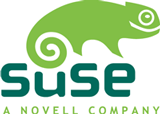
The guys over at the Linux Link Tech Show held a pretty good interview with Greg Mancusi-Ungaro from Novell about their Linux products. Although the interview was a little slow at times and did not start until 18 minutes into the show it still managed to cover a lot of ground.Topics ranged from OpenSUSE's growth (approximately one install every 11 seconds) through to Novell's Linux strategy and their transition from Netware. Also discussed was the KDE/Gnome debate and the rumoured (but untrue) death of the Hula project. It was also good to hear someone at Novell say they felt the SUSE CD-Rom layout was stupid, why you should need to download 5 CD's to get a working desktop is just crazy - put important things on the first two and leave the others as optional.

